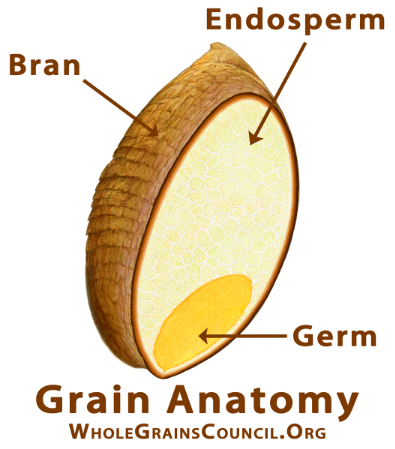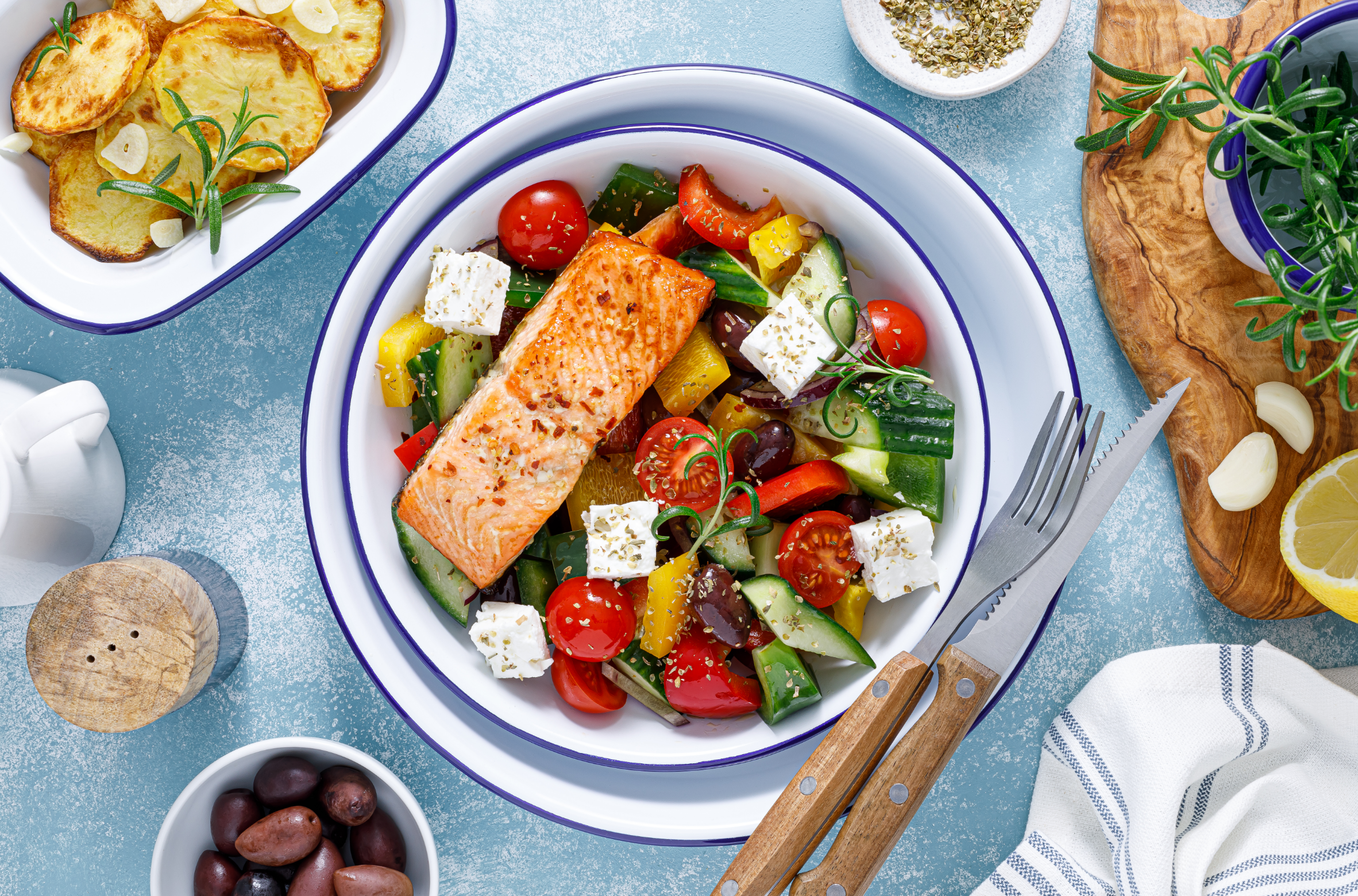If you’ve traveled to Mediterranean countries like Spain, Italy, Greece, or Turkey, you likely noticed their distinctive cuisine: whole grains, nuts, fresh vegetables, fish, fruit, and lots and lots of olive oil.
Today this type of diet, known as the Mediterranean diet, is well documented as one of the healthiest in the world.
So what makes the Mediterranean diet so healthy? Let’s take a look.

Elements of the Mediterranean Diet
Healthy Fats
First of all, it contains relatively little saturated fat. Saturated fats mainly come from animal sources and are solid (hard) at room temperature. Think of butter, lard, or cooled bacon grease. They are considered less healthy because they elevate “bad” cholesterol and promote inflammation.
The main source of fat in the Mediterranean diet is olive oil, which is a monounsaturated fat. Unsaturated fats are derived from plant sources (vegetable oils, nuts, and seeds) and are generally liquid at room temperature. (Exception: Despite being plant-based, coconut oil and palm oil actually contain saturated fats.) They are considered healthier because they elevate “good” cholesterol.
If it’s hard to remember which fats are bad, imagine the hardness/solidity of saturated fats hardening and clogging blood vessels, raising the risk of heart attack and stroke. Picture unsaturated fats (mostly oils) as liquids that keep your blood vessels supple and unclogged.
Pro-Tip: Drizzle balsamic vinegar and (extra virgin) olive oil on salad greens or put in a bowl to use as a dipping sauce for a snack of sliced veggies. Add minced garlic for some real zing!
Healthy Proteins
The Mediterranean diet deemphasizes dairy and meat—especially red meat—treating these more as accents to meals than main attractions. Red meat and dairy have more saturated fat than other forms of protein, which raise bad cholesterol and promotes chronic inflammation.
Instead, the diet recommends poultry and fish, especially salmon, mackerel, and herring, which are rich in vitamin D and heart-healthy omega-3 fatty acids. (Omega-3 fats are polyunsaturated fatty acids.)
The Mediterranean diet also emphasizes plant-based sources of protein, such as nuts, seeds, and beans/pulses.
Include Whole Grains and Limit Simple Carbohydrates
A whole grain—such as whole wheat flour—is the whole kernel, which includes the bran, germ, and the endosperm. These parts of the kernel contain valuable fiber, iron, and B vitamins. But a refined grain—such as white flour—has had the bran and germ removed. This gives the flour a finer texture, but it also removes the most nutritious elements.

Examples of other whole grains are amaranth, buckwheat, brown rice, barley, bulgur, oatmeal, quinoa, wild rice, even popcorn!
Limiting simple carbohydrates means reducing sugar, both white table sugar and the sugar in fruit juices, candy, and colas. These can make your blood “syrupy” and harder for your heart to pump around your body. They can also cause blood sugar to “spike.” Long term, blood sugar spikes can cause heart, kidney, eye, and nerve damage.
Fresh Fruits and Vegetables
The Mediterranean diet also emphasizes lots of fresh fruits and vegetables—multiple servings with each meal. This ensures that you get plenty of fiber and a variety of vitamins and minerals every day. Fiber helps slow digestion down, steadying blood sugar and avoiding spikes. It also forms feces (“poop”) and helps people avoid constipation by promoting regular bowel movements.
Examples of Mediterranean Diet Recipes
The Mayo Clinic website offers a number of Mediterranean-style recipes for salads and side dishes; main dishes; and desserts, including:
Barley and roasted tomato risotto
A Closer Look: The History of the World’s Best-Known Diet
In the 1950s, American scientist Ancel Keys, of the University of Minnesota, noticed high rates of heart disease among American businessmen, some of the most well-fed in the world, but very low rates in Europeans, who were still struggling nutritionally in the aftermath of World War II. He decided to study this dietary puzzle, and initiated the Seven Countries Study, which was published in 1980.
In his work, Keys documented the link between saturated fat and heart disease, and promoted the heart-healthy effects of a Mediterranean-style diet.
The Bottom Line
What makes the Mediterranean diet so healthy is its emphasis on fresh, unrefined ingredients and healthy fats from foods like olive oil, walnuts, and salmon. Now that you know more about it, you can live the Mediterranean lifestyle without ever leaving town!
Fun Fact: Mediterranean Countries
Fun Fact: Mediterranean Countries
Do you know how many countries border the Mediterranean Sea? Would you believe it’s 20? The Mediterranean borders Southern Europe, Western Asia, and North Africa. Plus two island nations, Cyprus and Malta, are located in the sea itself.

Sources:
Cleveland Clinic (omega-3 fats, red meat, inflammation)
Mayo Clinic (recipes)
Whole Grain Council (whole grains)
Wikipedia (Mediterranean countries)
USDA (whole grains)
 share
share



